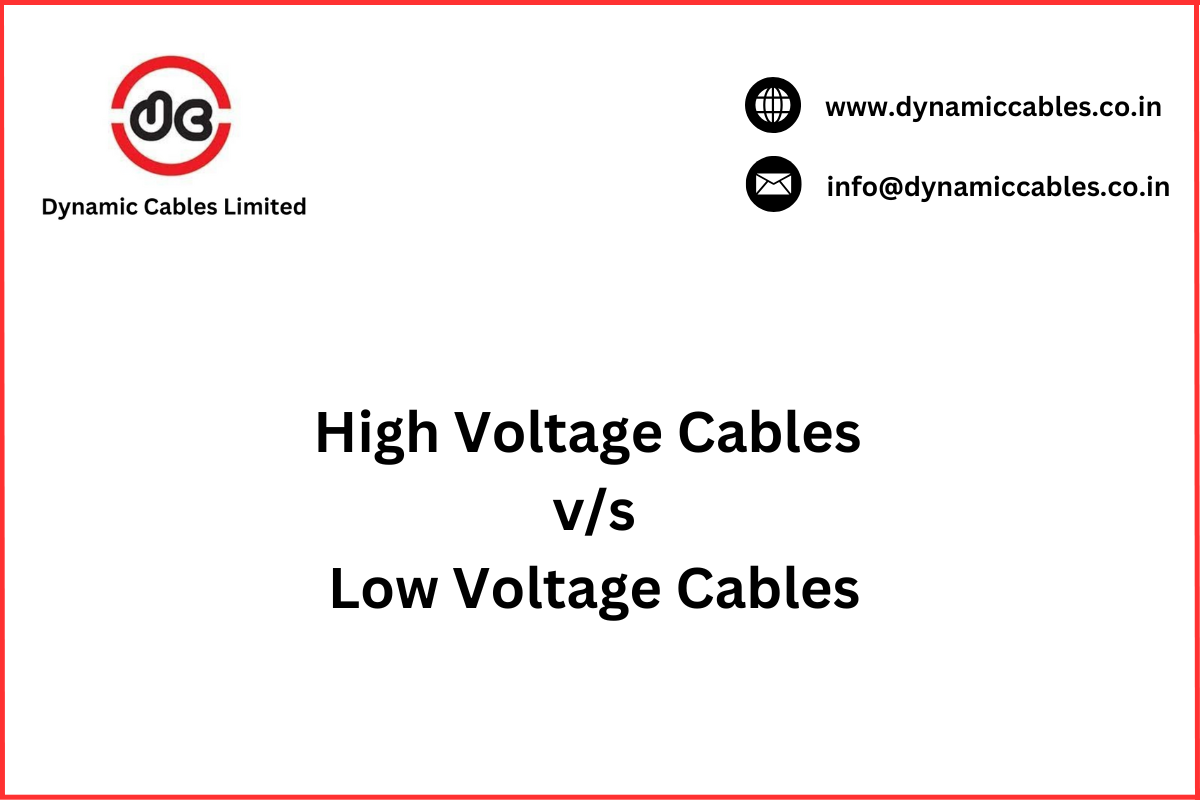- An ISO 9001:2015, 14001:2015 & 45001:2018 Company

Difference between High Voltage and Low Voltage Cables
When it comes to electrical systems, understanding the difference between high-voltage (HV) and low-voltage (LV) cables is crucial. Both cables play significant roles in power distribution and transmission, but they have different purposes and distinct characteristics.
In this article, we will explore the differences between high-voltage and low-voltage cables.
| Aspect | High Voltage Cables | Low Voltage Cables |
| Voltage Rating | High-voltage cables are designed for voltage above 1KV. | Low-voltage cables are designed for voltage up to 1KV. |
| Construction | High-voltage cables are made of multiple layers of insulating materials and conductive materials | Low-voltage cables have fewer layers. They are relatively simple and generally composed of conductors, insulation layers and sheaths. |
| Size and Weight | High-voltage-cables are larger and heavier in size | Low-voltage cables are smaller and lighter, making them easier to handle and install. |
| Cost | Due to the materials, High-voltage cables are expensive. | Low-voltage cables are affordable. |
When selecting the appropriate cable for your electrical system, it's essential to consider factors like voltage rating, insulation type, and the specific needs of your project. For the best results and to ensure high-quality performance, always contact a reliable high voltage cables manufacturer for your project needs. For projects requiring high-capacity power transmission, choosing the right high-voltage cable is crucial to ensure the safety, efficiency, and longevity of the system. High-voltage cables are engineered with specific features that make them suitable for heavy-duty applications such as transformers and generators. Understanding the key features of high-voltage power cables can help you make informed decisions about which cable is best suited for your requirements, whether you're working on large-scale power transmission or industrial projects.
 English
English


 C701, Tower-C, Noida One
C701, Tower-C, Noida One
